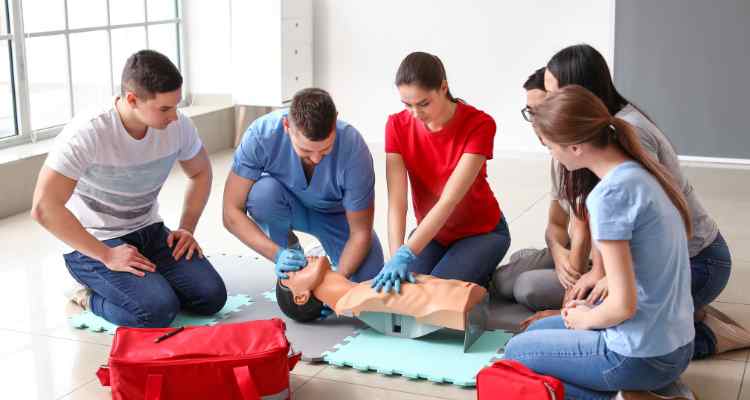Cardiopulmonary resuscitation (CPR) is a life-saving technique used in emergency situations to restore blood flow and breathing to someone who is experiencing cardiac arrest or other respiratory problems. Knowing how to perform CPR can make all the difference in these situations, potentially saving someone’s life.
Traditionally, CPR courses have been taught in person, with participants practicing on mannequins and receiving feedback from instructors. However, in recent years, online CPR courses have become increasingly popular. This raises the question: can a CPR course be taken online, and is it as effective as an in-person course?
Should You Take a CPR Course Online?
In short, the answer is yes, a CPR course can be taken online. However, whether or not it is as effective as an in-person course depends on a few factors. In this blog post, we’ll take a closer look at online CPR courses and what you need to consider before signing up for one. CPR courses are an important part of first aid training.
One of the main benefits of taking an online CPR course is the convenience factor. With an online course, you can learn at your own pace and on your own schedule, without having to worry about finding a class that fits into your busy life. Additionally, online courses are often more affordable than in-person courses, which can be a significant consideration for individuals or organizations looking to train a large number of people.
However, it’s important to note that not all online CPR courses are created equal, just like other first aid training. Before signing up for an online course, you should make sure that it is accredited by a recognized organization, such as the American Heart Association or the Red Cross. Accreditation ensures that the course meets certain standards and that the certification you receive will be recognized by employers and healthcare providers.
Things to Consider
Another consideration when it comes to online CPR courses is the hands-on aspect of learning. While online courses can provide valuable information and knowledge, they cannot replace the experience of practicing CPR techniques on a mannequin and receiving feedback from an instructor. Some online courses may include a hands-on component, such as a virtual practice session, but it’s important to research the specifics of the course before signing up.
Ultimately, the decision of whether to take an online CPR course or an in-person course depends on your individual needs and preferences. If you are looking for a convenient and affordable way to learn CPR and are comfortable with the online format, an online course may be a good option. However, if you prefer the hands-on experience of practicing CPR techniques in person, an in-person course may be a better fit.
The Advantages of In-Person CPR Courses
One of the biggest advantages of in-person CPR courses is the hands-on experience they provide. Participants can practice their CPR skills on mannequins under the guidance of an instructor, receiving feedback on their technique and ensuring that they are performing the technique correctly. This hands-on experience can be particularly important for individuals who may need to use CPR in a real-life emergency situation.
In-person courses also provide an opportunity for participants to ask questions and receive immediate answers from instructors. This can be particularly useful for individuals who are new to CPR or who may have questions about specific techniques or scenarios.
One potential downside of in-person CPR courses is the time commitment. In-person courses typically require participants to attend a certain number of hours of instruction, which may not be feasible for individuals with busy schedules. Additionally, in-person courses can be more expensive than online courses, particularly if travel and accommodations are required.
If you decide that an in-person CPR course is the right choice for you, there are a few things to keep in mind when selecting a course. First, look for a course that is accredited by a recognized organization, such as the American Heart Association or the Red Cross. Accreditation ensures that the course meets certain standards and that the certification you receive will be recognized by employers and healthcare providers.
You should also consider the location, schedule, and cost of the course. Look for a course that is convenient to your location and fits into your schedule. Additionally, consider the cost of the course, including any additional fees for materials or certification.
It’s Always Best to Be Prepared
In conclusion, whether you choose an online or in-person CPR course, the most important thing is to learn the skills necessary to potentially save someone’s life. Both types of courses have their advantages and disadvantages, and the best choice for you will depend on your individual needs and preferences. With the right training and preparation, you can feel confident in your ability to perform CPR in an emergency situation.

